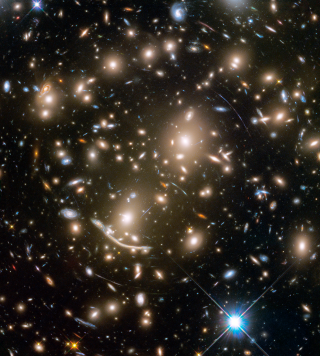Bibcode
Díaz-García, L. A.; Cenarro, A. J.; López-Sanjuan, C.; Ferreras, I.; Fernández-Soto, A.; González Delgado, R. M.; Márquez, I.; Masegosa, J.; San Roman, I.; Viironen, K.; Bonoli, S.; Cerviño, M.; Moles, M.; Cristóbal-Hornillos, D.; Alfaro, E.; Aparicio-Villegas, T.; Benítez, N.; Broadhurst, T.; Cabrera-Caño, J.; Castander, F. J.; Cepa, J.; Husillos, C.; Infante, L.; Aguerri, J. A. L.; Martínez, V. J.; Molino, A.; del Olmo, A.; Perea, J.; Prada, F.; Quintana, J. M.
Bibliographical reference
Astronomy and Astrophysics
Advertised on:
11
2019
Journal
Citations
15
Refereed citations
13
Description
Aims: We aim at constraining the stellar population properties of quiescent galaxies. These properties reveal how these galaxies evolved and assembled since z ̃ 1 up to the present time.
Methods: Combining the ALHAMBRA multi-filter photo-spectra with the fitting code for spectral energy distribution MUFFIT (MUlti-Filter FITting), we built a complete catalogue of quiescent galaxies via the dust-corrected stellar mass vs. colour diagram. This catalogue includes stellar population properties, such as age, metallicity, extinction, stellar mass, and photometric redshift, retrieved from the analysis of composited populations based on two independent sets of simple stellar population (SSP) models. We developed and applied a novel methodology to provide, for the first time, the analytic probability distribution functions (PDFs) of mass-weighted age, metallicity, and extinction of quiescent galaxies as a function of redshift and stellar mass. We adopted different star formation histories to discard potential systematics in the analysis.
Results: The number density of quiescent galaxies is found to increase since z ̃ 1, with a more substantial variation at lower stellar mass. Quiescent galaxies feature extinction AV < 0.6, with median values in the range AV = 0.15-0.3. At increasing stellar mass, quiescent galaxies are older and more metal rich since z ̃ 1. A detailed analysis of the PDFs reveals that the evolution of quiescent galaxies is not compatible with passive evolution and a slight decrease of 0.1-0.2 dex is hinted at median metallicity. The intrinsic dispersion of the age and metallicity PDFs show a dependence on stellar mass and/or redshift. These results are consistent with both sets of SSP models and assumptions of alternative star formation histories explored. Consequently, the quiescent population must undergo an evolutive pathway including mergers and/or remnants of star formation to reconcile the observed trends, where the "progenitor" bias should also be taken into account.
Based on observations collected at the Centro Astronómico Hispano Alemán (CAHA) at Calar Alto, operated jointly by the Max-Planck Institut für Astronomie and the Instituto de Astrofísica de Andalucía (CSIC).
Related projects

Galaxy Evolution in Clusters of Galaxies
Galaxies in the universe can be located in different environments, some of them are isolated or in low density regions and they are usually called field galaxies. The others can be located in galaxy associations, going from loose groups to clusters or even superclusters of galaxies. One of the foremost challenges of the modern Astrophysics is to
Jairo
Méndez Abreu

Traces of Galaxy Formation: Stellar populations, Dynamics and Morphology
We are a large, diverse, and very active research group aiming to provide a comprehensive picture for the formation of galaxies in the Universe. Rooted in detailed stellar population analysis, we are constantly exploring and developing new tools and ideas to understand how galaxies came to be what we now observe.
Anna
Ferré Mateu

Evolution of Galaxies
Galaxy evolution is a crucial topic in modern extragalactic astrophysics, linking cosmology to the Local Universe. Their study requires collecting statistically significant samples of galaxies of different luminosities at different distances. It implies the ability to observe faint objects using different techniques, and at different wavelengths
Jorge
Cepa Nogue